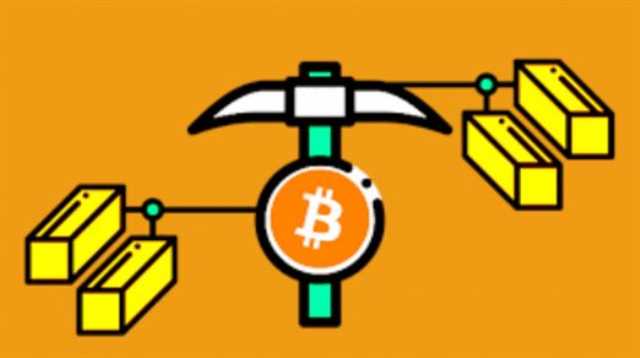
CoinCheckup provides live cryptocurrency prices and charts, listed by crypto market cap. Get latest crypto prices, predictions,news, and historical data for Bitcoin and thousands of altcoins. As Monero’s developers continue to innovate and ecosystem participants explore its use cases, these will be important considerations. Regardless, all cryptocurrencies — including privacy coins — operate on immutable ledgers, which means evidence of transactions will exist forever, whether legitimate or illegitimate. Although many illicit actors use Monero to obscure transactions, they haven’t adopted Monero to the extent one might expect. The primary reason is due to Monero’s lower liquidity compared to that of other cryptocurrencies, making large transactions more difficult to execute.
Monero: What It Means, How It Works, and Features
Bytecoin is a privacy-focused cryptocurrency launched in 2012 that aims to provide users with anonymous and untraceable transactions using features similar to Monero’s. Monero, also known as XMR, is a cryptocurrency with privacy-enhancing features encoded into its protocol. Most popular cryptocurrencies, such as Bitcoin and Ethereum, operate on a transparent, immutable ledger, enabling anyone to view and trace transactions.
Is Monero Anonymous? How Untraceable is XMR?

However, some research companies (e.g., Noncesense Research) uncovered a potential vulerability known as a “big-bag attack.”. Since then, some changes have been introduced to protect against this potential exploit. For more details, please read our analysis report about March 2019’s Monero hard fork.
Published Papers
Its Research Lab and Development Team are constantly working on new, innovative technologies. Since its launch, the project has received contributions from over 500 developers located all around the world. Merchants and individuals accepting Monero do https://www.tokenexus.com/ not need to worry about blacklisted or tainted coins. Monero uses a proof-of-work algorithm adjusted to be processor-friendly and resistant to the application-specific integrated circuits (ASICs) that have taken over other cryptocurrency networks.
3 Dynamic block size
Most cryptocurrencies have multiple publicly-available mining pools that can be found with a simple Google search. Similar to the Bitcoin blockchain, Monero utilizes a Proof-of-Work consensus mechanism. Its PoW algorithm, RandomX, was designed to maintain decentralized mining and resist specialized hardware like ASICs. XMR emission is unlimited to ensure continued mining incentives, and Monero generates a new block approximately every two minutes.
Monero’s key features
- A ring signature is a cryptographic technique that allows a group of individuals to digitally sign a message anonymously.
- Trading and investing in digital assets is highly speculative and comes with many risks.
- Many cryptocurrency exchanges have also taken action to end Monero support for similar reasons.
- Bulletproofs cut the size of its confidential transactions by at least 80 percent, significantly increasing transaction efficiency.
- The Monero Project is at the forefront of cryptocurrency privacy and security.
Mistakes in handling wallet keys or transaction details can lead to irreversible loss of funds. Furthermore, as a POW protocol, Monero consumes energy, leading to environmental stress in running the network. If these techniques were to be compromised, they could expose user transaction data. Additionally, as with any digital asset, there’s the risk of loss due to hacking, phishing, or other cyber attacks.

Monero is a privacy crypto designed to confuse anyone investigating transactions. Its techniques break transactions into smaller amounts and mix them up, making monero analysis them nearly impossible to trace. For this reason, it is illegal to use in some countries, while others allow it but monitor transactions carefully.

According to blockchain analysis firm Chainalysis, XMR has become favored over BTC on darknet markets. These online underground economies sell illegal goods and operate on the dark web, an encrypted portion of the internet inaccessible through traditional search engines. Other developers used ideas from CryptoNote to create Bytecoin, the first private cryptocurrency. Transferring to a new stealth address will break the link with our external purchase using stealth transactions. Ring signatures and stealth addresses are so great at obfuscating transactions a user needs to publicize their transactions to dilute privacy intentionally.
With Monero, there are no wire transfer or check clearing fees, no multi-day holding periods, and no fraudulent chargebacks. Because Monero is decentralized, it is not constrained by any particular legal jurisdiction and provides safety from capital control. In some countries, Monero is not allowed because of the anonymity it provides, which is taken advantage of for criminal uses. Monero’s creator used the name “thankful_for_today” in the Bitcoin Forum post where it was announced. After some division between developers, thankful_for_today and Monero development participants split ways, with a forked version remaining the one that is now popular. Initially, the ASIC-resistant feature of the network owed itself to a modified version of CryptoNight (a PoW algorithm) that was frequently adjusted to prevent ASIC mining。
